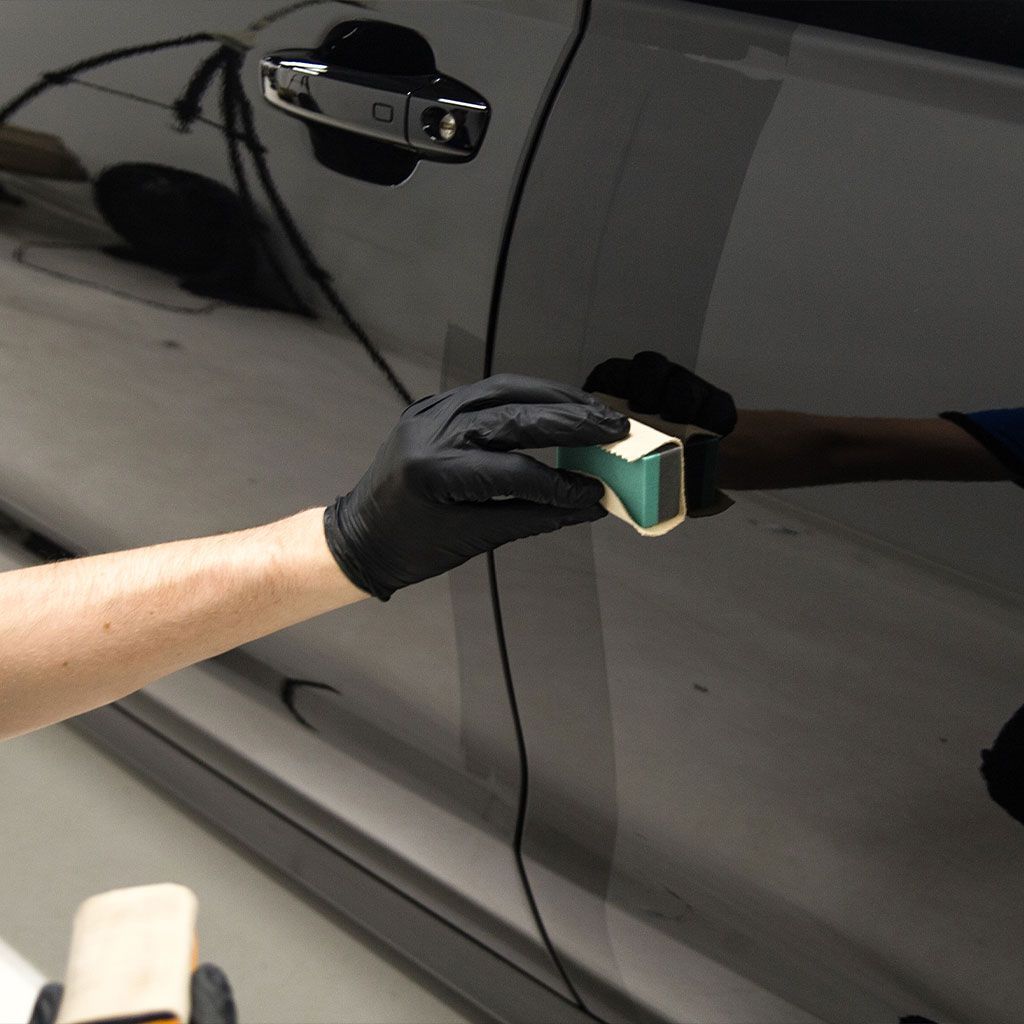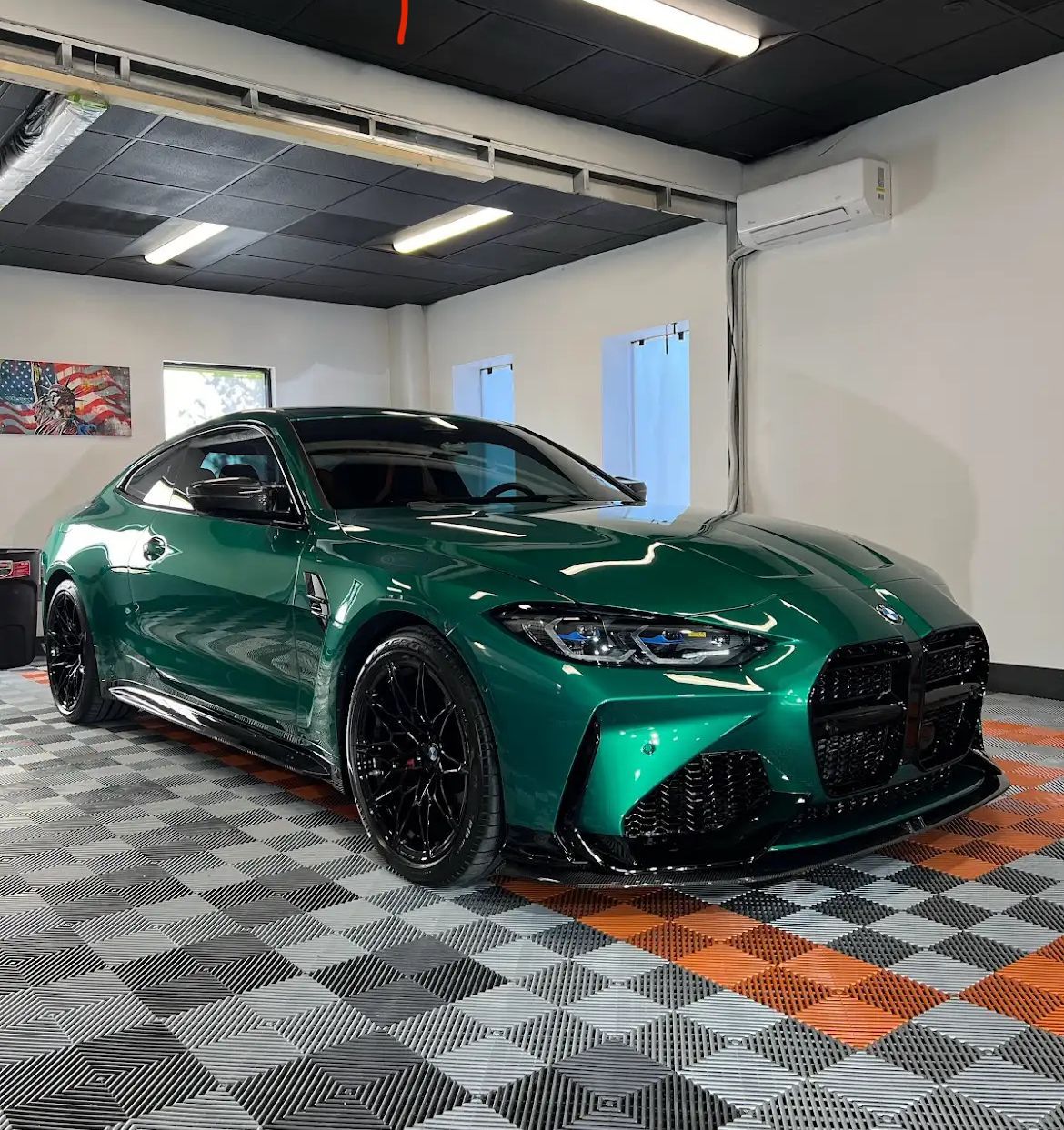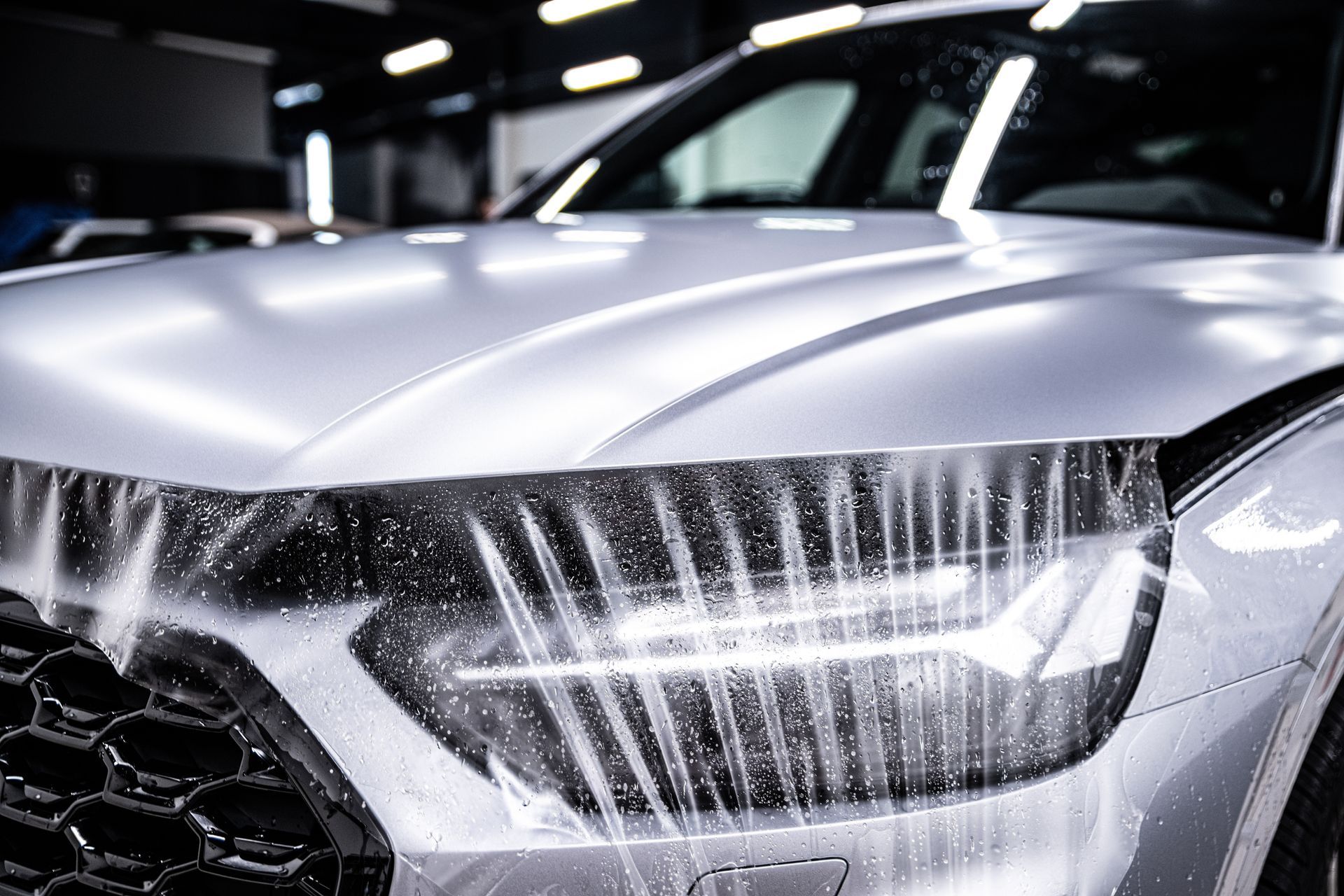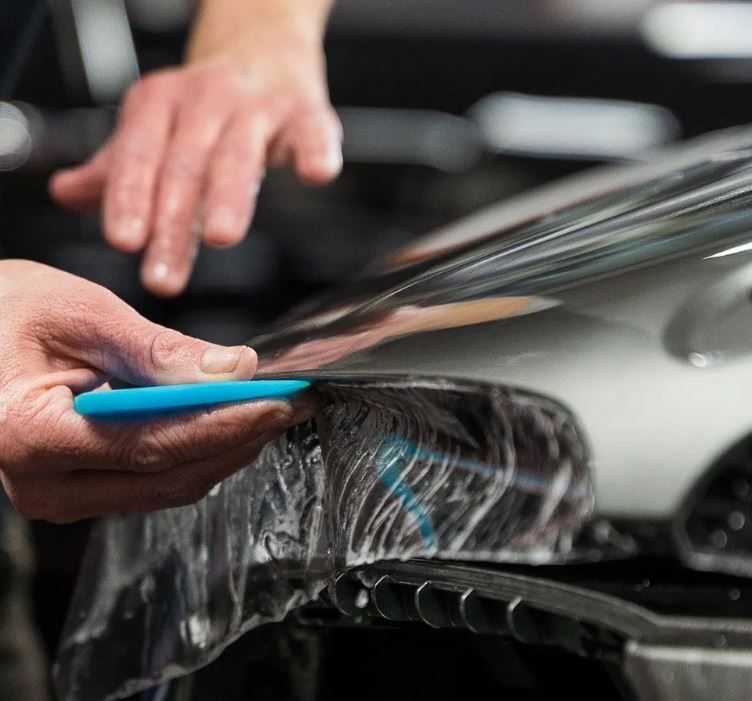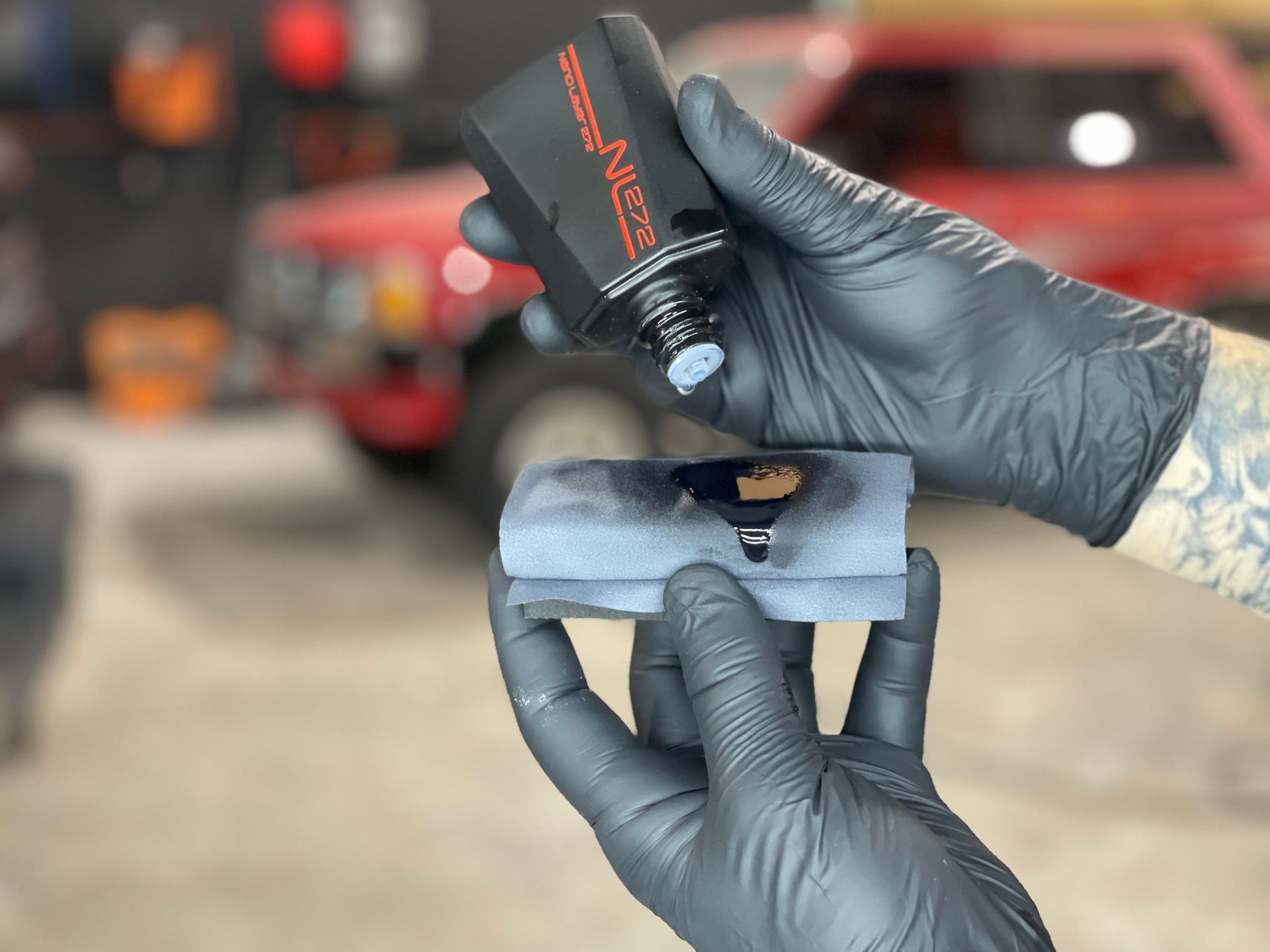Cost-Effective Ceramic Coatings: Long-Term Benefits for Vehicle Protection
GET A QUOTECALL (770) 722-3486
When it comes to protecting your vehicle, many car owners find themselves torn between traditional waxes and modern solutions like ceramic coatings. It’s easy to assume that a shiny coat of wax will do the trick, but what if I told you there’s a better way to keep your ride looking fresh for years? After investing my own time researching and trying out both options, I discovered that ceramic coatings not only safeguard your car from daily wear and tear but also make cleaning feel like a walk in the park. With strong protection against environmental factors, along with reduced upkeep efforts, these coatings are changing the game for vehicle maintenance. Let’s explore how they can be a smart choice for any car owner looking to protect their investment.
Ceramic coatings provide significant long-term benefits, including reduced car cleaning time, protection from environmental contaminants, and preservation of the vehicle's paintwork. Although the initial investment may seem high, many users find that the durability and ease of maintenance lead to savings over time, making it a worthwhile investment for enhancing vehicle longevity.
Evaluating Ceramic Coatings as an Investment
When considering ceramic coatings as an investment for your vehicle, it’s important to look beyond the sticker price. While it’s true that initial application costs can range from $800 to $2,000 when done professionally, many DIY enthusiasts find formulations for between $50 and $150 that deliver solid results. What shouldn’t be overlooked are the substantial long-term savings these coatings provide. With proper care, a ceramic coating enhances durability and significantly reduces the frequency of maintenance tasks.
One of the most appealing aspects of ceramic coatings is their longevity. While traditional wax requires reapplication every few months, often resulting in repetitive costs, ceramic coatings can last anywhere from 2 to 5 years with minimal upkeep. This translates to less money spent over time on waxing supplies and labor.
Cost-Benefit Analysis
To further illustrate the financial advantages, let’s dive into a detailed comparison of costs associated with maintaining a vehicle without ceramic coatings versus those utilizing such technologies. The figures speak volumes: without a coating, annual expenses can accumulate rapidly, totaling approximately $7,500 over five years. In contrast, those who opt for ceramic coatings stand to save substantially—potentially thousands of dollars. These savings arise not only from reduced maintenance requirements but also from preserving the paint's integrity against environmental contaminants.
Besides their cost-saving benefits, ceramic coatings protect vehicles from harsh elements such as UV rays and acid rain. This level of protection ensures that your vehicle maintains its appearance longer and contributes positively to your car’s resale value—often by 15% more than untreated vehicles. As you consider your options, think about what you want from your vehicle protection solution: minimal upkeep and long-lasting shine or frequent wax jobs that only offer short-term results?
Understanding the economic impact of ceramic coatings will allow you to make informed decisions tailored to your needs. Excellent consumer satisfaction rates—around 85% report contentment with the durability and protection provided—further highlight why this investment is worthy of consideration as we now explore the practical implications it offers for vehicle longevity and aesthetic appeal.
Long-Term Benefits of Ceramic Coatings
Ceramic coatings provide an impressive array of advantages that can significantly enhance both the longevity and the aesthetic appeal of your vehicle. Imagine having a protective layer that acts as a shield against UV rays, harsh weather, and even impacts from small debris on the road. This is exactly what ceramic coatings offer! Not only do they create a robust barrier over your vehicle's paint, but they also contribute to maintaining that showroom shine for years to come.
One crucial benefit is their durability; unlike traditional waxes that last only a few months, ceramic coatings can remain effective for 2 to 5 years. This means less time spent on upkeep and more time enjoying your ride. According to various studies, vehicles treated with ceramic coatings retain up to 20% more of their resale value compared to untreated ones. This is largely due to how they guard against environmental damage, fading, and oxidation—common culprits that diminish not only the car's beauty but its functionality as well.
Additionally, many users appreciate how ceramic coatings enhance hydrophobic properties, causing water to bead up and roll off rather than settle on the surface. This characteristic makes cleaning a breeze—just a quick rinse and dry can restore that gleam! Users have noted spending significantly less time washing their cars because dirt tends to slide off easily rather than cling stubbornly to the surface.
The significant advantages presented highlight that ceramic coatings are not merely enhancements; they serve as essential safeguards that preserve both the life and beauty of your vehicle. Now, let's turn our attention toward another important aspect concerning the ways we can safeguard our vehicles from environmental challenges.
Environmental Protection Features
One of the standout benefits of ceramic coatings is their remarkable ability to shield your car from a range of environmental hazards. The protective layer created by these coatings actively repels water, dirt, tree sap, bird droppings, and other contaminants that can wreak havoc on your car’s finish. This results in less frequent washing and potentially longer intervals between detailing sessions, ultimately contributing to reduced water consumption and fewer harsh cleaning chemicals entering our systems.
Protection from UV Rays and Acid Rain
A significant concern for many car owners, especially those living in sunny regions, is damage from UV rays. Over time, these rays can cause your car's paint to oxidize and fade, diminishing its aesthetic appeal and reducing resale value. Here’s where ceramic coatings come into play: their advanced formulations provide a robust shield against UV radiation, helping to maintain vibrant colors and preventing costly repainting down the line.
Additionally, acid rain poses another serious threat to vehicles that could lead to irreversible damage. When rain combines with industrial pollution and falls on unprotected surfaces, it can etch the paint over time. Luckily, this protective ceramic layer absorbs some of the acid's harmful effects before they reach the vulnerable paint beneath. For individuals who park outdoors or live in urban environments with increased pollutants, this encapsulating barrier is vital.
Furthermore, not only does a ceramic coating guard against harsh weather elements, but it also leads to easier maintenance. By creating a slick surface that minimizes the adhesion of dirt and grime, it reduces the need for harsh chemical cleaners during wash sessions. Consequently, this reduces the environmental impact associated with vehicle maintenance while also protecting your investment sustainably.
Longevity and Durability
- Ceramic coatings can last 2-5 years, significantly outperforming traditional waxes that typically require reapplication every few months.
- The durable nature of ceramic coatings means less frequent applications translate to lower overall costs in maintenance times and materials.
Implementing a ceramic coating on your vehicle serves as more than just an aesthetic enhancement; it acts as a proactive solution for environmental protection and longevity. As we explore further, it’s essential to consider how these coatings not only protect but also enhance the overall appearance of your vehicle.
Enhancing Vehicle Appearance
Beyond its protective qualities, ceramic coating offers a stunning visual upgrade for your vehicle. Imagine driving down the road, the sun shining just right, and your car gleaming as though it just rolled off the showroom floor. That's what a high-quality ceramic coating can do. The application creates an impressive depth of color and richness that elevate your car's appearance exponentially.
Gloss and Shine
One of the most immediate effects users notice after applying a ceramic coating is its remarkable gloss and shine. A ceramic coating enhances the vehicle’s paint, making it look vibrant and dynamic. The glossy finish not only reflects light beautifully but also gives a mirror-like effect, which is incredibly appealing for both casual drivers and car enthusiasts alike. This slick surface can make colors appear bolder and more saturated, turning heads wherever you go.
This enhanced brilliance serves a purpose beyond visual pride; it represents a substantial investment in your vehicle's longevity. When dirt and grime accumulate on surfaces with ordinary wax, they often dull the vibrancy of the paint beneath. The hydrophobic properties of ceramic coatings mean water beads up and rolls away quickly, taking dirt along with it. This results in less frequent washing while maintaining that spotless appearance. The ease with which you can maintain cleanliness helps preserve that dazzling shine over time.
It's these practical advantages combined with striking aesthetics that make ceramic coatings particularly attractive. The promise of longevity paired with exquisite sheen transforms a typical car into one that looks effortlessly well-maintained and sharp. Whether you're showing off at a local car meet or simply enjoying daily drives, you can bask in the confidence that your vehicle stands out—not just for its protection but for its unparalleled beauty as well.
As we explore further, understanding how to keep this beautiful finish in optimal condition will provide valuable insights into extending the life of your investment.
Cost-Effective Maintenance
Once you've applied a ceramic coating, you'll notice some remarkable changes in how you maintain your vehicle. The primary appeal of these coatings lies in their ability to create a robust barrier over your paintwork that repels dirt, grime, and harmful contaminants. This protective layer enhances your car's appearance while reducing the need for frequent, labor-intensive cleaning sessions.
For instance, traditional waxing or sealants often require repeated applications every few months to maintain shine and protection; however, ceramic coatings can last between 2 to 5 years when cared for properly.
The ease of maintenance that comes with ceramic coatings is truly game-changing. Imagine driving your car into a muddy parking lot and then simply needing to rinse it off rather than scrubbing for hours. Users have reported that regular washing becomes a breeze, often requiring nothing more than a quick rinse or gentle spray to clear away accumulated dirt and debris. A recent survey revealed that 85% of ceramic coating users indicated they could spend up to 50% less time cleaning and detailing compared to owners of untreated vehicles. It's not just about saving time; it's also about reducing the frequency of deep cleans and wax applications that can strain your budget.
In terms of costs, think about this: while the average annual maintenance cost for maintaining a ceramic-coated vehicle ranges from approximately $100 to $150, wax maintenance can soar anywhere from $300 to $500 annually. This stark contrast highlights how opting for a ceramic coating is an investment that pays off. Additionally, you'll enjoy protection against environmental contaminants like tree sap and bird droppings—real nuisances for outdoor parkers. By keeping these elements at bay, you reduce damage to your car’s finish over time while minimizing repair costs associated with paint restoration or correction steps often needed after exposure to such elements.
Longevity Comparison
- Ceramic coatings generally last 2 to 5 years.
- Waxing typically lasts 1 to 3 months, leading to frequent reapplications.
- Sealants usually endure from 6 months to a year, still necessitating regular upkeep.
Transitioning to a ceramic coating significantly alters how you manage your vehicle's appearance and offers long-term protection from the elements. As we explore further, we'll examine other key qualities that make this choice advantageous for car owners.
Durability and Resistance
Ceramic coatings stand out in the world of automotive protection due to their exceptional durability and resistance. Unlike traditional waxes that only last for a few months, ceramic coatings create a robust barrier against everyday wear and tear. For instance, if you park your car outside, exposing it to rain, bird droppings, tree sap, or even UV rays, a ceramic coating provides an effective shield. Through advanced nanotechnology, these coatings bond at a molecular level with the vehicle’s surface, creating a hard layer that guards against damage while preserving the vehicle's aesthetic.
Longevity
Most professional ceramic coatings can guarantee protection lasting up to five years or more. That’s quite remarkable when you think about how often vehicles encounter environmental hazards like road salt and pollutants.
The longevity of ceramic coatings is largely attributed to their non-porous nature; they repel contaminants rather than allow them to settle on the surface. So instead of worrying about stains eating into your paint job, you can enjoy peace of mind knowing that you’ve installed a protective layer meant to last. The coatings have a rating as high as 9H on the pencil hardness scale, which conveys superior durability compared to conventional waxes that typically score around 2H to 4H.
Furthermore, users often report dramatic improvements in their cleaning routine after applying these coatings. For example, many have mentioned how simple it became to clean their cars post-application. Light debris washes away effortlessly under high-pressure water sprays or when wiped down with a damp cloth.
To maintain such stunning longevity, proper care is essential. Regular gentle washing combined with periodic inspections will help in revealing any potential issues before they escalate. In fact, performing a paint decontamination process prior to applying ceramic coatings is highly recommended to ensure maximum effectiveness. This practice removes old waxes and embedded dirt that could prevent a strong bond between the coating and the vehicle's surface.
Investing in ceramic coatings might seem pricey upfront, yet their ability to protect your vehicle over several years positions them as a cost-effective investment in preserving both appearance and value. Transitioning from this understanding leads us to consider the practical aspects of implementation and the associated costs involved.
Application Process and Initial Costs
The application of ceramic coatings is not just a simple task; it involves several crucial steps that determine the longevity and effectiveness of the coating. While the upfront expense can make some car owners hesitant, understanding proper application sheds light on the long-term return on investment. Essentially, the process is about creating a formidable barrier for your vehicle's surface, and each step plays an important role in that protection.
Professional vs. DIY Application
Choosing between a professional service or taking the DIY route can be a challenging decision. On one hand, professional applications deliver exceptional finishes due to their expertise; however, this often comes with a higher price tag ranging from $800 to $2,000. Conversely, DIY kits offer a more budget-friendly option, typically costing between $50 and $150.
For those who venture into DIY ceramic coating, preparation is key. The first step involves thoroughly cleaning and decontaminating the vehicle's surface to ensure that any existing grime or residues do not interfere with the bonding process. Skipping this step can result in obstructions that diminish the protective capabilities of the coating. Next comes application, where ensuring an even spread becomes vital. Different products have varying instructions for curing times, which may affect how long you need to wait before seeing optimal results. Following manufacturer guidelines closely can keep you from having to apply additional layers or treatments too soon.
Once the product has cured fully, buffing becomes essential. This process ensures that the applied coating bonds properly with your vehicle’s surface—a critical step for maintaining durability. Think of it as sealing in all that hard work you invested in applying the coating. Skimping on this stage could lead to peeling or inadequate protection later on.
Ultimately, whether you choose professional installation or embrace a DIY approach, recognizing that every dollar spent on quality reflects back in terms of protection and maintenance can guide your decision-making process effectively. Investing in quality ceramic coatings pays dividends over time by minimizing future repair costs and keeping your ride looking pristine. By carefully considering both options and their associated costs, you'll be better equipped to protect your vehicle effectively for years to come.
Shield Your Car with Marietta’s Ceramic Coating Experts
Give your vehicle the protection it deserves with LeJeune Ceramic Coating & Paint Protection, the trusted provider of premium ceramic coating services in Marietta, GA. Our advanced ceramic coatings deliver unmatched durability, shielding your car’s finish from harsh elements, UV rays, and environmental contaminants while providing a stunning, glossy finish that turns heads. Whether you’re looking to maintain your car’s showroom shine or simplify maintenance, we’re here to help. Contact us today to learn more and schedule your ceramic coating appointment!


